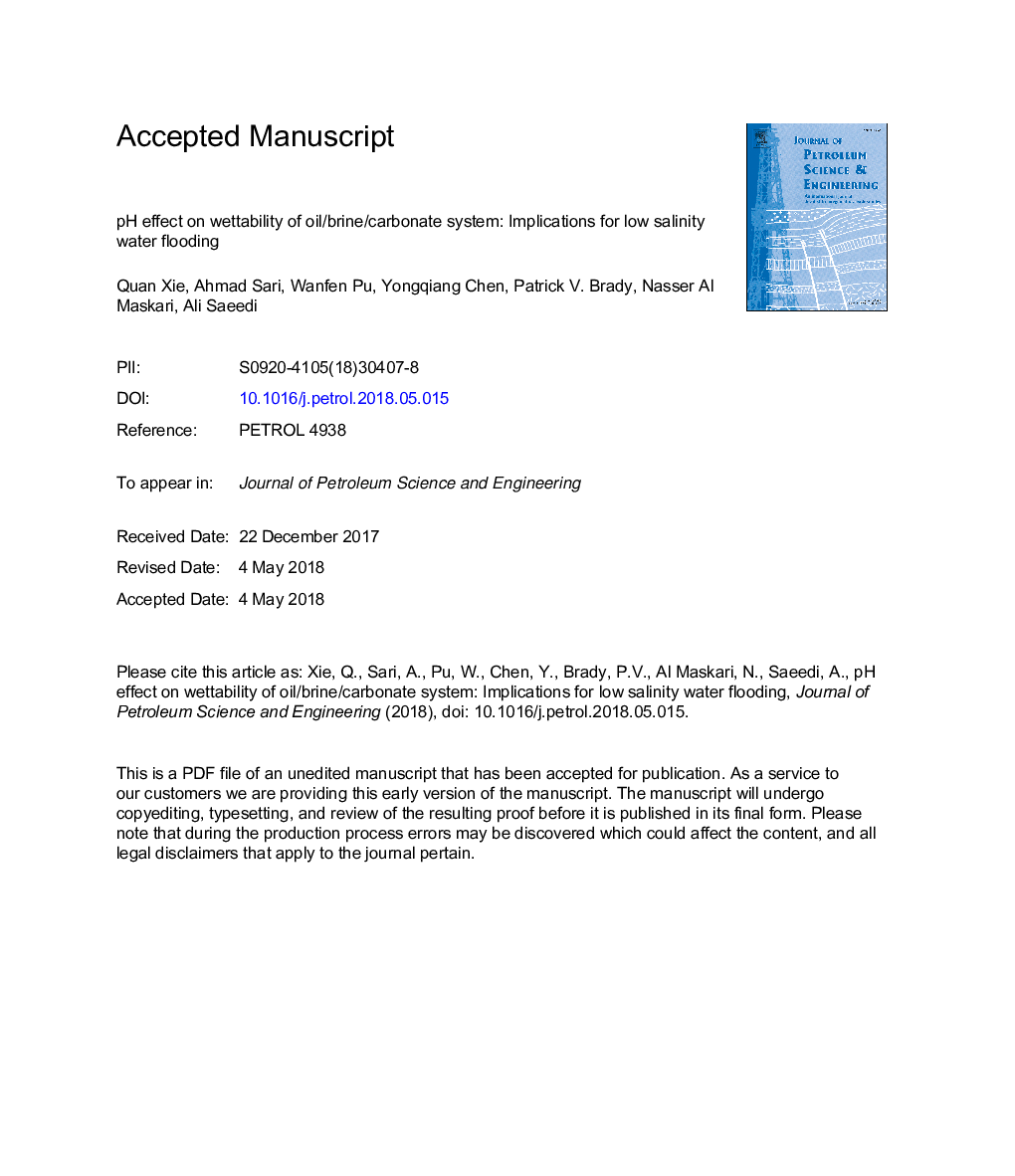| Article ID | Journal | Published Year | Pages | File Type |
|---|---|---|---|---|
| 8124705 | Journal of Petroleum Science and Engineering | 2018 | 17 Pages |
Abstract
We thereby measured contact angles at two different pH (pHâ¯=â¯3 and 8) in the presence of either 1â¯mol/L Na2SO4 or 1â¯mol/L CaCl2 using a crude oil with acid number of 1.7 and base number of 1.2â¯mg KOH/g. Moreover, we performed a geochemical modelling study in light of the diffuse double layer to understand how pH controls the number of surface species at interfaces of oil/brine and brine/carbonate. Our results show that pH scales with oil/brine/carbonate wettability, demonstrating that pH is one of the controlling factors to govern the system wettability. Further, our results suggest that pH (6.5-7.5) likely triggers an oil-wet system, which is favourable for low salinity water flooding, but pHâ¯<â¯5 usually exhibits a water-wet system, which explains why low salinity effect is not always observed in carbonate reservoirs. This also confirms that CO2 flooding, carbonated water flooding, and CO2 huff-and-puff EOR very likely renders a strongly water-wet system due to H+ adsorption on the interface of oil/brine and brine/carbonate as a result of CO2 dissolution.
Related Topics
Physical Sciences and Engineering
Earth and Planetary Sciences
Economic Geology
Authors
Quan Xie, Ahmad Sari, Wanfen Pu, Yongqiang Chen, Patrick V. Brady, Nasser Al Maskari, Ali Saeedi,
